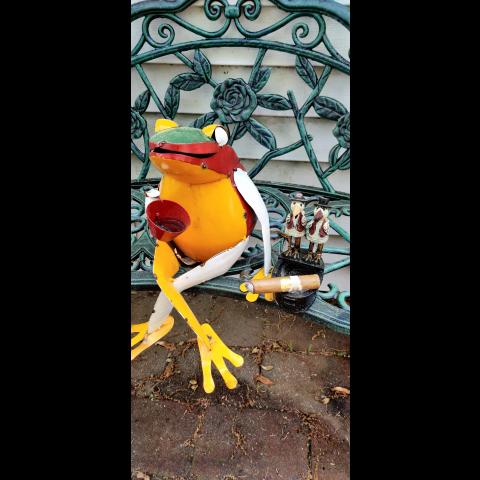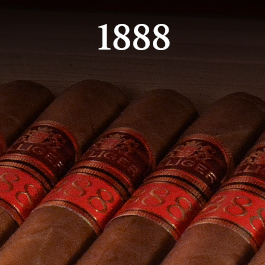Villiger

VILLIGER
included the addition of the goose quill mouthpiece on the vastly popular Villiger-Kiel cigar, preventing loose tobacco from entering the smoker’s mouth, as well as expanding the cigar production to Germany in order to avoid paying the expensive import taxes.
In 1918, Louise’s sons Max and Hans joined the family business to build the company’s sales, marketing, and production. The brothers kept the business growth steady until 1950 when Heinrich Villiger joined the business.
Heinrich brought the Villiger brand to the world. In 1955, Heinrich decided to source tobacco from Cuba. This choice led to the unique Culebra shape, which consists of 3 Panatela cigars braided into one cigar, of the Villiger Krumme.
Cuban factories developed the shape to prevent theft of cigars that were produced for sale. Torcedors received the distinct cigar as their daily ration and were questioned if they were found smoking any other cigar. Villiger loved the creativity and decided to produce cigars using the rare rolling style.
The Villiger brand proved immensely popular when it crashed the 1964 World Exhibition becoming one of the most talked about presentations of the incredible show. That was the first time the brand was shown off globally, but it soon became a household name when they established their Formula One racing team. The team, known as Villiger Shadow Racing, won the Zeltweg circuit during its very first year of competition in 1977.
The global expansion continued when El Mundo Del Tabaco was established in 1997. The purpose of this firm was to aid the production of non-Cuban cigars. Two years later, the North American division of Villiger was created to distribute in the American market.
Expanding to America was one of Heinrich’s smartest business moves. The American distribution is the largest market for Villiger’s premium handmade cigars. In 2016, the company went through a corporate restructuring which moved the American headquarters from Richmond, Virginia to Miami, in the cigar obsessed state of Florida.
Rene Castaneda, former president of Miami Cigar & Co., was named the president of Villiger a month before the move and oversaw the successful transition. A month after settling into the 305, Heinrich announced he would be stepping down as CEO of Villiger. Robert Suter, an expert in international Swiss business, filled in Heinrich’s shoes but Heinrich remains involved in day-to-day operations.
Villiger’s popularity among American aficionados can be attributed to their affordable price and use of quality tobacco. Villiger has received several 90+ ratings in Cigar Aficionado publications.
The cigars distributed by Villiger Cigars North America feature mostly Dominican and Nicaraguan tobacco. Villiger offers cigars from mild to full strength, as well as handmade and box pressed cigars.
Villiger cigars are a testament to the value of innovation and standing out. Villiger’s passion for tobacco is evident in the consistent quality of their smoking experience.
...Read More
In 1918, Louise’s sons Max and Hans joined the family business to build the company’s sales, marketing, and production. The brothers kept the business growth steady until 1950 when Heinrich Villiger joined the business.
Heinrich brought the Villiger brand to the world. In 1955, Heinrich decided to source tobacco from Cuba. This choice led to the unique Culebra shape, which consists of 3 Panatela cigars braided into one cigar, of the Villiger Krumme.
Cuban factories developed the shape to prevent theft of cigars that were produced for sale. Torcedors received the distinct cigar as their daily ration and were questioned if they were found smoking any other cigar. Villiger loved the creativity and decided to produce cigars using the rare rolling style.
The Villiger brand proved immensely popular when it crashed the 1964 World Exhibition becoming one of the most talked about presentations of the incredible show. That was the first time the brand was shown off globally, but it soon became a household name when they established their Formula One racing team. The team, known as Villiger Shadow Racing, won the Zeltweg circuit during its very first year of competition in 1977.
The global expansion continued when El Mundo Del Tabaco was established in 1997. The purpose of this firm was to aid the production of non-Cuban cigars. Two years later, the North American division of Villiger was created to distribute in the American market.
Expanding to America was one of Heinrich’s smartest business moves. The American distribution is the largest market for Villiger’s premium handmade cigars. In 2016, the company went through a corporate restructuring which moved the American headquarters from Richmond, Virginia to Miami, in the cigar obsessed state of Florida.
Rene Castaneda, former president of Miami Cigar & Co., was named the president of Villiger a month before the move and oversaw the successful transition. A month after settling into the 305, Heinrich announced he would be stepping down as CEO of Villiger. Robert Suter, an expert in international Swiss business, filled in Heinrich’s shoes but Heinrich remains involved in day-to-day operations.
Villiger’s popularity among American aficionados can be attributed to their affordable price and use of quality tobacco. Villiger has received several 90+ ratings in Cigar Aficionado publications.
The cigars distributed by Villiger Cigars North America feature mostly Dominican and Nicaraguan tobacco. Villiger offers cigars from mild to full strength, as well as handmade and box pressed cigars.
Villiger cigars are a testament to the value of innovation and standing out. Villiger’s passion for tobacco is evident in the consistent quality of their smoking experience.
...Read More















